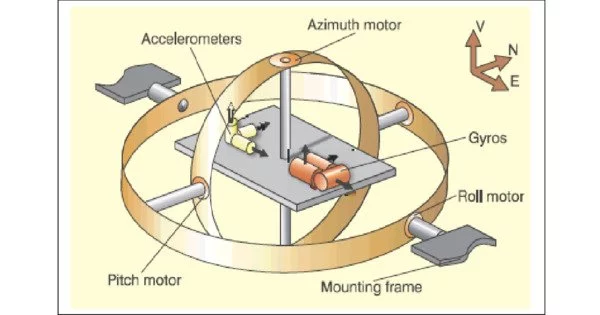An inertial measurement unit (IMU) is an electronic device that uses a combination of accelerometers, gyroscopes, and magnetometers to measure and report a body’s particular force, angular rate, and sometimes orientation. It is a device that measures and reports information about an object’s acceleration, angular velocity, and sometimes orientation with respect to a given starting point in a variety of applications such as aerospace, robotics, automotive, and navigation. IMUs are referred to as IMMUs when a magnetometer is integrated. In many systems that require motion tracking, stability control, and positioning, IMUs are crucial components.
IMUs are commonly employed to control modern vehicles such as motorbikes, missiles, airplanes (an attitude and heading reference system), including unmanned aerial vehicles (UAVs), and spacecraft such as satellites and landers. Recent advancements enable the manufacture of IMU-enabled GPS systems. When GPS signals are absent, such as in tunnels, within buildings, or when there is electrical interference, an IMU allows a GPS receiver to function.
An IMU typically consists of three main sensors:
- Accelerometer: An accelerometer is a device that detects linear acceleration along one or more axes. It indicates how an object is accelerating or decelerating in a given direction. It can, for example, detect changes in the speed or direction of a vehicle or aircraft.
- Gyroscope: A gyroscope monitors rotational rate or angular velocity around one or more axes. It offers information about how an object rotates or changes orientation. Gyroscopes are critical for drone stabilization, spaceship attitude control, and improving the accuracy of motion tracking in virtual reality systems.
- Magnetometer (optional): A magnetometer, which measures the strength and direction of a magnetic field, is included in some IMUs. This sensor can be used to detect the IMU’s orientation in relation to the Earth’s magnetic field, hence providing a reference for absolute orientation or heading information (compass direction).
An IMU may determine more sophisticated motion characteristics such as velocity, location, and orientation by combining data from these sensors. IMUs are frequently combined with other sensor technologies, such as GPS (Global Positioning System), to provide accurate and dependable navigation and tracking information, particularly in situations where GPS signals are unreliable or unavailable (e.g., indoor environments, urban canyons, or when GPS signals are jammed).
IMUs have a wide range of applications, including:
- Aerospace: IMUs are crucial for aircraft and spacecraft navigation, attitude control, and autopilot systems.
- Robotics: Robots use IMUs for stability control, motion planning, and obstacle avoidance.
- Automotive: IMUs are used in advanced driver-assistance systems (ADAS) and autonomous vehicles for improved safety and navigation.
- Virtual Reality (VR) and Augmented Reality (AR): IMUs enhance the accuracy of head-tracking and motion-sensing controllers in VR and AR applications.
- Sports and Fitness: IMUs can be found in wearable devices like fitness trackers and smartwatches to monitor physical activity and gesture recognition.
















